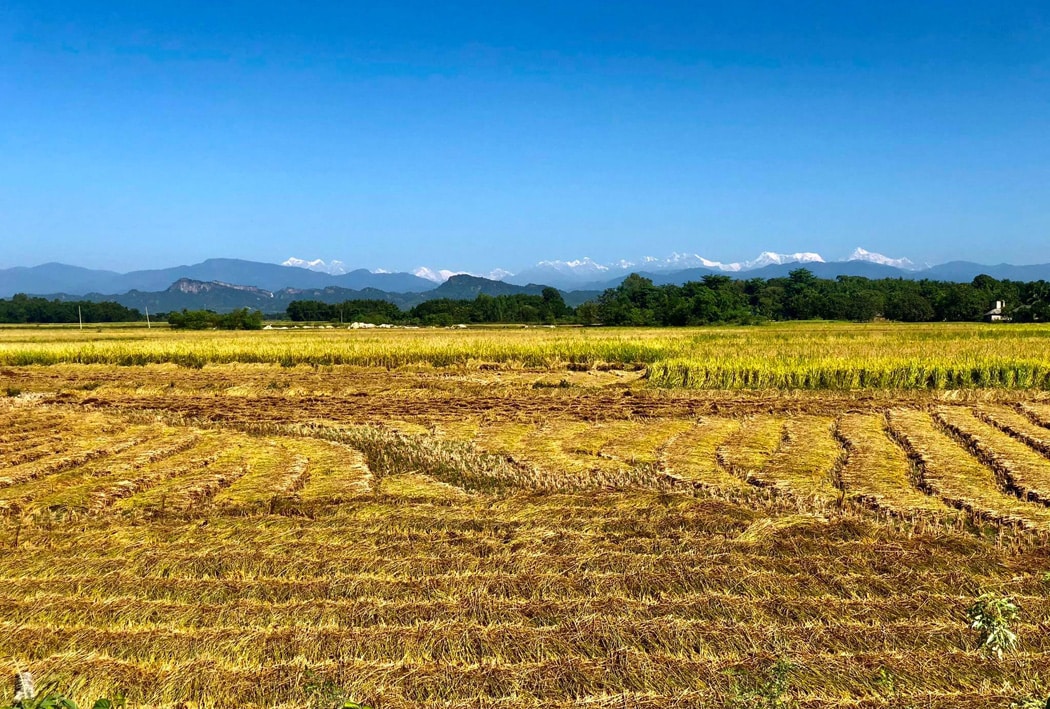About Terai
- Terai, or Tarai, is a lowland belt of flat, alluvial land stretching along the Nepal-India border and running parallel to the lower ranges of the Himalayas.
- A strip of undulating former marshland, it stretches from the Yamuna River in the west to the Brahmaputra River in the east.
- It is the northern extension of the Gangetic Plain in India, commencing at about 300 meters above sea level and rising to about 1,000 meters at the foot of the Siwalik Range.
- In India, the Terai extends over the states of Haryana, Uttarakhand, Uttar Pradesh, Bihar, and West Bengal.
- It extends nearly 800 km from east to west and about 30-40 km from north to south.
- The average elevation is below 750 m.
- The flatland of Terai was formed by Gangetic alluvium consisting of beds of silt, clay, sand, pebbles, and gravel.
- At its northern edge are numerous springs forming several streams, including the important Ghaghara River (left-bank tributary of the Ganges River), that intersect the Tarai and are responsible for its marshy character.
- The landscape boasts some of India’s best-known tiger reserves and protected areas such as Corbett Tiger Reserve, Rajaji National Park, Dudhwa Tiger Reserve, and Valmiki Tiger Reserve. In total, the landscape has 13 protected Areas, nine in India and four in Nepal.
- Interspersed with the Tarai is the Bhabar, which is a region of coarse gravel and shingle deposits supporting sal (Shorea robusta) forests.
- The eastern part of the Tarai is known in West Bengal state and in Bangladesh as the Duars.
Q1) What is silt?
Silt is a solid, dust-like sediment that water, ice, and wind transport and deposit. Silt is made up of rock and mineral particles that are larger than clay but smaller than sand.
Last updated on November, 2025
→ Check out the latest UPSC Syllabus 2026 here.
→ Join Vajiram & Ravi’s Interview Guidance Programme for expert help to crack your final UPSC stage.
→ UPSC Mains Result 2025 is now out.
→ UPSC Notification 2026 is scheduled to be released on January 14, 2026.
→ UPSC Calendar 2026 is released on 15th May, 2025.
→ The UPSC Vacancy 2025 were released 1129, out of which 979 were for UPSC CSE and remaining 150 are for UPSC IFoS.
→ UPSC Prelims 2026 will be conducted on 24th May, 2026 & UPSC Mains 2026 will be conducted on 21st August 2026.
→ The UPSC Selection Process is of 3 stages-Prelims, Mains and Interview.
→ UPSC Result 2024 is released with latest UPSC Marksheet 2024. Check Now!
→ UPSC Prelims Result 2025 is out now for the CSE held on 25 May 2025.
→ UPSC Toppers List 2024 is released now. Shakti Dubey is UPSC AIR 1 2024 Topper.
→ UPSC Prelims Question Paper 2025 and Unofficial Prelims Answer Key 2025 are available now.
→ UPSC Mains Question Paper 2025 is out for Essay, GS 1, 2, 3 & GS 4.
→ UPSC Mains Indian Language Question Paper 2025 is now out.
→ UPSC Mains Optional Question Paper 2025 is now out.
→ Also check Best IAS Coaching in Delhi

















